Military Drones: How AI-Powered UAVs Are Revolutionizing Surveillance and Reconnaissance Operations
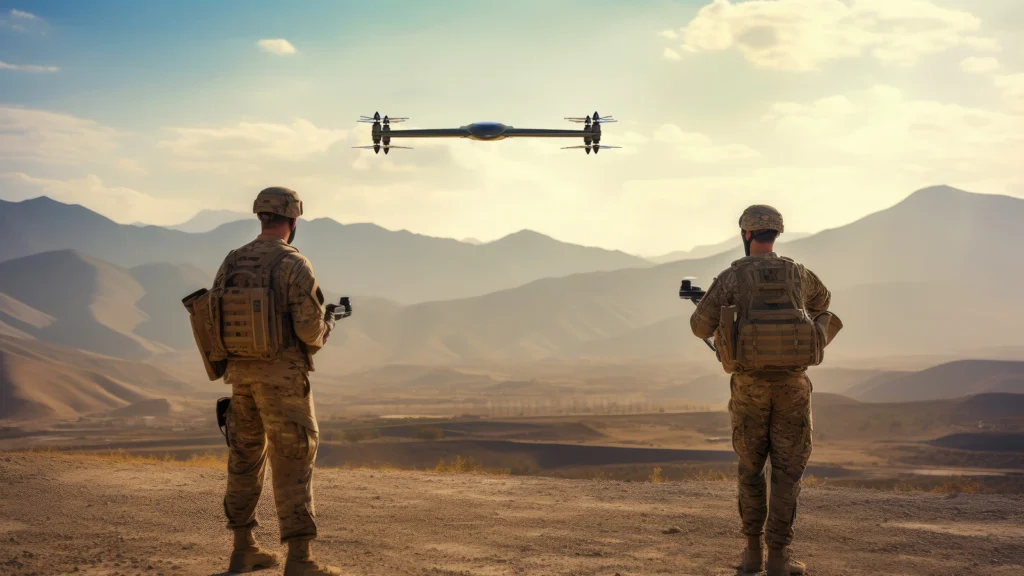
Military drones have become a key part of modern defense. They provide 24-hour aerial surveillance and unsurpassed situational awareness. UAVs equipped with AI and machine learning technologies can now gather intelligence more quickly and accurately. Thereby, enable the armed forces to take action. These are unmanned aircraft that enable the commanders to monitor, evaluate, and respond to any threat in real-time. Before we discuss their uses and impact further, it’s important to first understand what is meant by military drones inspection.
What is Meant by Military Drones Inspection?
Military drones inspection refers to the process of checking and evaluating military drones to ensure they are fully functional, safe, and mission-ready. It includes examining hardware, sensors, software, and flight systems to detect faults, ensure performance standards, and maintain operational efficiency.
The Rise of AI-Powered Military Reconnaissance and Defense Drones
Aerial reconnaissance drones have developed into a full mission support system, besides being a mere observation tool. With AI, situational awareness provides drones with the ability to recognize, classify, and pursue moving objects in the absence of human operators. The defense forces will have a competitive advantage in the rough terrains and hostile environments with computer vision and predictive analytics.
Beyond reconnaissance, AI-powered UAVs are now extending their roles into defense logistics, mission coordination, and strategic field operations. Besides combat, a military drone can enhance perimeter protection, border monitoring, and defense asset inspection. The C4ISR systems are integrated to interconnect tactical surveillance drones with command centers, sharing data and coordinating missions in real-time. This has created a smarter and leaner defense strategy grounded on accuracy, velocity, and real-time reconnaissance.
As militaries worldwide adopt UAV surveillance solutions, the defense landscape transforms. Technology is upgrading the tradition of intelligence collection and sharing from border security drones to unmanned reconnaissance aircraft. This revolution marks a decisive shift toward AI‑enabled fleet management and smarter data‑driven UAV defense monitoring systems.
Development of Military Drone Technology
The rise of military drones shows how modern warfare has moved from manned aircraft to smart, self-flying systems. AI-powered drones help military forces make faster decisions, provide more accurate surveillance, and reduce risks to personnel. This represents a significant advance in drone defense and real-time intelligence gathering.
Beyond surveillance, AI-powered UAVs are now evolving into digital nodes within a fully connected defense ecosystem. It can be used with C4ISR systems to handle data from other drones and sensors in real-time, which improves situational awareness. This integration provides commanders with real-time land, air, and sea operations. Consequently, tactical surveillance drones play a central role in coordinated military missions.
Unlike traditional manned aircraft, unmanned surveillance aircraft are more cost‑effective and easier to deploy. Predictive maintenance for drone fleets reduces downtime and costs while ensuring they are always ready. These new technologies show that the future of defense will be smart, strong, and more independent.
Key Differences Between Manned Aircraft and Unmanned Surveillance Drones
|
Feature |
Manned Aircraft |
Unmanned Surveillance Drones |
|
Operation |
Requires onboard pilot |
Remotely operated or autonomous |
|
Cost |
High operational and maintenance cost |
More cost-effective to operate and maintain |
|
Deployment Time |
Requires runway and crew preparation |
Quick launch and flexible deployment |
|
Risk to Human Life |
High in combat or hostile zones |
Minimal, no onboard personnel |
|
Maintenance |
Regular manual inspection needed |
Uses predictive maintenance with AI |
|
Mission Duration |
Limited by pilot endurance and fuel |
Can fly longer using automated systems |
|
Data Collection |
Manual or semi-automated |
Real-time data via sensors and AI analytics |
|
Suitability |
Large-scale missions |
Targeted surveillance and reconnaissance |
Surveillance and Reconnaissance Capabilities
Modern military drones have reshaped how defense forces are able to conduct their surveillance and intelligence gathering. The systems have included features such as high-tech imaging, sensors, and automation that ensure the best visibility and control of drones on the battlefield. By merging UAV reconnaissance services with real‑time analytics, militaries achieve faster responses and stronger operational awareness.
A study on AI-enabled intelligence systems showed that automated target recognition improved classification accuracy and processing reduction time by up to 70% compared to conventional image processing systems. By merging UAV reconnaissance services with real‑time analytics, militaries achieve faster responses and stronger operational awareness.
Real‑Time Monitoring
Military drones deliver continuous, high‑resolution feeds to command centers, enabling quick tactical decisions. Real-time reconnaissance enables troops to adapt to the threats on the ground.
Infrared Vision and Night Vision
Aerial reconnaissance drones with thermal imaging (night vision) can detect heat and movement, even in darkness or through smoke. They provide a level of visibility beyond human capability, which is essential for round-the-clock surveillance.
Hyperspectral and Multispectral Sensors
Hyperspectral and multispectral imaging is used to scan the terrain and vegetation to find camouflage in the scanned area by operators using UAV surveillance. This helps to hit the target correctly and identify the environment within the long-range ISR missions.
Perimeter and Tactical Security
The drones in tactical use serve a purpose of guarding the borders and surveying the boundaries and restricted areas to sense any form of intrusion. Motion is identified early enough, and a warning is sent using AI-powered UAVs.
High Resolution Aerial Intelligence
Unmanned aircraft can also be fitted with high-tech optics and gimbals to assist them in capturing very detailed images to confirm missions and map them. This assists in the surveillance of military facilities by UAVs and in analyzing targets at high resolution.
Continuous Aerial Surveillance
Smarter drones can fly long distances with little operator control. Constant surveillance ensures that key areas and vital resources are not undermined.
UAVs that operate under AI are constantly pushing for innovative advancements. The evidence is the trend toward more precise and greater autonomy of defense activities. These systems ensure that nations have a tactical edge and better situational awareness in all domains, thanks to real-time reconnaissance and continuous aerial surveillance of the country.
In the near future, the integration of AI, automation, and advanced ISR analytics will enable defense drones to anticipate and neutralize threats before they arise, transforming surveillance into truly predictive intelligence. If you have interest in it you would love to read: ResearchGate paper – AI-Powered Intelligence, Surveillance, and Reconnaissance (ISR) Systems in Defense
Smarter Drone Surveillance using NLP and AI
Artificial Intelligence has transformed military drones into autonomous systems capable of adaptive, data‑driven decision‑making. Machine learning in tactical drones enables UAVs to detect threats, prioritize surveillance, and accurately forecast the movement patterns of enemies. This development can be used to perform more accurate UAV reconnaissance in mission-critical situations.
AI-based UAV systems using features like deep learning and RF analysis will be able to increase capabilities to identify and detect threats to aerial spaces. In a study conducted in 2024 entitled Enhancing UAV Security Through Zero Trust Architecture, threats identified reached as high as 84.59%.
AI drones use computer vision to process images in real-time. They can track vehicles, people, or objects and change their flight paths automatically to cover more area. Also, AI detection improves awareness without needing human control.
AI, along with predictive analytics, can better optimize the planning of operations by forecasting risks and resource needs. It can also navigate autonomous drones, which provides stability of flights and reliability of missions, even in the presence of electronic warfare. The synergy of AI and NLP provides the foundation for smart military drones in today’s defense landscape.
Strategic Cases in Defense Operations
With their agility, precision, and intelligence, modern military drone surveillance has become an indispensable instrument in any defense industry, providing the most advantage. They are applied in a number of activities, including border security, infrastructure screening, and 24/7 aerial patrol. Below is an in-depth discussion of how remote surveillance UAVs and defense systems are changing military strategies.
Border Security Operations
- Remote surveillance using UAVs allows an inspection of a much larger area of the border, which will conserve manpower.
- Detection of threats early and rapid response to intrusions.
- Enhances situational awareness along difficult-to-access terrain.
Infrastructure and Asset Inspection
- UAV monitoring for military infrastructure inspects facilities and high-value assets efficiently.
- Identifies risks, damages, or unauthorized activity in real time.
- Supports proactive maintenance and security strategies.
Intrusion Surveillance and Patrols
- Simple tactical situational awareness is enhanced with autonomous long-range flight drones.
- Provides real-time intelligence to inform decisions based on more data.
- Decreases the size of blind zones and increases the readiness to operate.
With autonomous navigation and AI-powered surveillance, military operations will no longer be dependent on the human factor, which means less likely human-associated failures, and instead will be supported by targeted intelligence. This synergy provides quicker reaction, smarter resource distribution, and additional security at all levels of defense infrastructure.
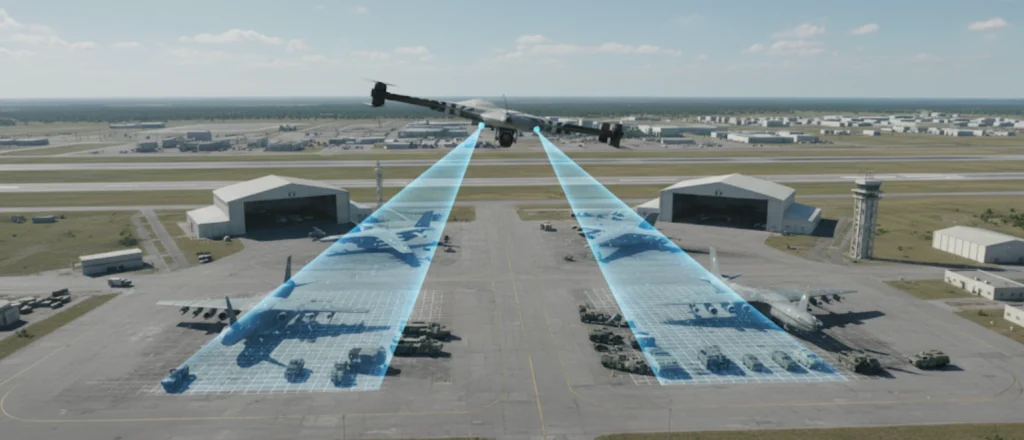
Economic Impact and Cost Efficiency of Military Drones
The use of military drone surveillance has revolutionized the defense industry in terms of cutting costs, improving efficiency, and accuracy of operations. Currently, high-impact missions are run by governments, utilizing automation and UAVs controlled by AI, without the need to deploy large numbers of personnel to the battlefield or expend fuel on extensive fleets.
This change is likely to favor more innovative and more sustainable defense policies. Learn more about its impacts here.
Cost-Effective Operations
Unmanned surveillance aircraft offer a more economical alternative to manned aircraft and ground patrols. They reduce expenses related to fuel, logistics, and personnel. With UAV reconnaissance services, defense forces can maintain air dominance at a fraction of the traditional cost.
Reduced Human Risk and Maintenance Costs
AI-driven UAV fleet management improves predictive maintenance and mission scheduling. Militaries using drones in hazardous areas reduce human vulnerability to hazards by a significant proportion. This approach minimizes downtime and helps prevent expensive mechanical failures.
Constant Monitoring of Low Budgets
The reason is that AI-controlled robots will be able to provide 24/7 real-time reconnaissance without necessarily raising defense budgets in the same proportion. They move along borders and strategic locations due to their ability. This kind of continuous monitoring enhances efficiency and perception of any situation.
More Intelligent Resource Usage
Drones reduce wastage when planning a military operation by predicting optimal resources to use. This will give each flight hour the optimum intelligence value. The outcome is a data-driven defense ecosystem developed based on precision and sustainability.
Strategic Cost Advantages
Tactical surveillance drones can significantly reduce operational costs in many ISR and inspection use-cases. Published reports (World Bank – Unlocking the Lower Skies) and field studies (McKinsey / industry analyses) commonly report cost reductions in the range of about 30–50% compared with conventional manned or manual methods.
They also reduce logistics complexity by utilizing fewer human resources and consumables. These savings are multiplied by time and modernization that can be scaled.
AI-powered drones offer both economic and strategic benefits. They create more efficient, data-driven defense systems and help make faster decisions in real time. Such development is transitioning to more intelligent, sustainable, and economical warfare.
As AI-driven UAVs continue to mainstream logistics and resource allocation, they mark a new defense framework in which economic efficiency and technological innovation can advance hand in hand, effectively reshaping how nations define strategic power.
The Military Doctrine and Strategic Integration
Modern military drones have become the dominant part of military strategy and doctrine. They cease to be auxiliary means but become essential values in contemporary warfare. This integration has transformed countries’ plans and operations.
The C4ISR integration of drones provides unified intelligence sharing. Real-time data from drones supports rapid, evidence-based decisions during high-risk operations. It also fosters stronger collaboration between human operators and AI systems.
When AI-controlled UAVs provide real-time reconnaissance and geospatial data, tactical situation awareness is expected to increase. Soldiers are able to monitor the threats, the movement of troops, and even the changes in the terrain in real time, which ensures that the battlefield tactics are well-informed and strategic.
Ultimately, military drones enable interoperability across allied systems and defense partnerships. Shared UAV reconnaissance services allow synchronized missions and coalition readiness. This is the future of global defense co-operation.
What is C4ISR and Secure Data Systems Integration?
The tenet of the C4ISR framework, that is, Command, Control, Communications, Computers, Intelligence, Surveillance, and Reconnaissance, is the foundation of modern defense operations. This system is fully equipped with military drones that are used to provide a smooth flow of intelligence to ensure that commanders are provided with real-time information.
With safe UAV data communications, valuable information is transmitted to the command centers without being damaged. The defense networks are not affected by cyber intrusions and unauthorized access due to encrypted communication protocols, which increase the level of mission and information security.
Regulations establish a protective conformity of deployment and data management of drones. They coordinate UAV defense surveillance systems with the global safety/accountability standards. The characteristics of the responsible use of drones in military locations are this dynamism and control of attack.
Challenges and Regulatory Problems
Despite the fact that military drone surveillance is transforming modern operations in the military sector, there is vulnerability to cybersecurity, compliance, and ethical responsibility.
These are the issues that make the UAV defense monitoring systems functional according to the international standards and the nature of war.
Cybersecurity Risks
Among the major issues is the problem of cyberattacks designed to disrupt safe UAV data transmission and derail the mission integrity. An attack on systems may leak secret information or hijack the control of UAVs. The cybersecurity level should be constantly improved to secure defense facilities.
Anti-Drone Countermeasures
The competing forces are inventing anti-drone technologies that jam and interfere with navigation. Even highly developed defense UAV technology can be countered in this way. Mission resilience is essential and requires developing redundancy and encrypted communication.
Military Regulatory Compliance
Defense regulatory compliance ensures that military drones operate in accordance with FAA, CAA, and NATO regulations, which address concerns such as illegal surveillance, airspace safety, and operational risks. To meet these standards, (DaaS) Drone as a Service providers offer FAA-registered drones that adhere to strict defense and aviation compliance requirements, ensuring secure and lawful drone operations in sensitive environments. Compliance is thus important to reinforce lawful, ethical, and cooperative defense practices.
Secure Transmission and Data Privacy
The security of data transmission of UAVs ensures national security in protecting sensitive intelligence. With interception, encryption will ensure that data is not intercepted in UAV reconnaissance services and data relay. Operation confidentiality and accuracy are ensured through secure communication.
Operation Restrictions Beyond the Border
Different authorities have strict airspace regulations and export regulations on unmanned surveillance aircraft. Such restrictions impair the information exchange and the use of drones. The compliance with defense regulatory compliance provides legal international operations.
These challenges can be tackled to make UAV defense monitoring systems consistent and lawful in global operations. By focusing on cybersecurity, regulation, and responsible AI applications, defense organizations will be able to use military drones responsibly and transparently.
What is the Future of Military Drone Technology?
The recent use of intelligence drones in the military has revolutionized the manner in which military staff conduct surveillance, reconnaissance, and tactical missions. The new uses of AI in drone fleets and autonomous defense systems are increasingly making quicker, smarter, and synchronized operations on the battlefield.
Rise of Smart Drone Swarms
The advent of smart drones for military use provides the ability to use more than one UAV in a synchronized mission.
- Work in drone swarms.
- Responds to emerging threats.
- Humanize missions by a coordinated control of AI.
Autonomous Decision Making and Real-Time AI Feedback
The autonomous defense systems can increase decision-making without human latency.
- Instantly analyze mission data.
- Can change flight destinations and objectives on her personal account.
- Improve accuracy and reduce response time to life-threatening processes.
Artificial Intelligence and Unmanned Aerial Vehicles Fleet Management
Robot drones controlled by AI are highly accurate and consistent in mass deployments.
- Anticipate the requirements of maintenance.
- Plan missions automatically using data.
- Facilitate the easy coordination of defense networks.
The modern defense strategy will involve the use of smart drones in the military, as technology has yet to reach its peak. With the combination of an AI-controlled drone fleet and autonomous defense technologies, countries will have unprecedented agility, accuracy, and situational awareness in future battlefields.
Conclusion
The use of military drones is transforming the concept of surveillance, reconnaissance, and warfare maneuvers around the globe. By embedding them in C4ISR systems and situational awareness based on AI, defense operations become smarter, faster, and safer. Such synergy will be an indication of a significant shift to a period of warfare that is data-driven and technology-intensive.
UAVs powered by AI become better controlled, more efficient, and forward-looking, benefiting defense organizations. These remotely controlled systems reduce threats, costs, and time wastage of time-sensitive missions, leading to a defense terrain that is grounded on accuracy and intelligence.
To have even a clearer vision of how our UAV surveillance solutions would be used to complement our defense activities, schedule a demonstration with our defense technology experts today.
You may also like: What are the Biggest Commercial Applications of Drone Technology Today?
FAQs Section
What is the role of military drones in modern defense?
The role of military drones is to support intelligence and surveillance by giving command centers real-time data. They enhance decision-making and reduce risks in critical missions.
What are the benefits of AI-powered UAVs for surveillance activities?
Machine learning and computer vision provide UAVs with AI to recognize, track, and analyze threats in the most precise manner possible. This automation will likely improve the speed and reliability of missions.
What are the reconnaissance services of the UAV?
UAV reconnaissance services provide aerial intelligence for defense, border security, and infrastructure monitoring. They provide awareness of situations over large areas.
What are the ways to implement AI technologies into military drones?
AI enables self-driving vehicles, intelligence-driven systems, and responsive AI, leading to military applications. It allows drones to learn and react faster in combat zones.
How secure is drone-based intelligence gathering in military missions?
Sensitive data remains protected with secure UAV data transmission and encryption protocols. These measures ensure defense regulatory compliance and operational confidentiality.
Read Our Other Blogs
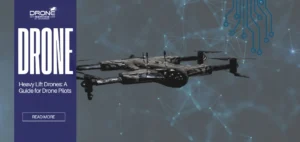
05 December 2025
Heavy Lift Drones: A Guide for Drone Pilots
Heavy Lift Drones: A Guide for Drone Pilots Heavy lift drones are uncrewed aerial vehicles (UAVs) built to carry heavy...
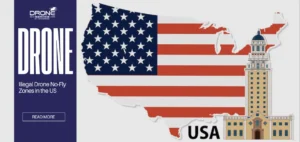
04 December 2025
10 Illegal Drone No-Fly Zones in the United States You Must Know
10 Illegal Drone No-Fly Zones in the United States As drone use grows across photography, mapping, inspections, and security, the...
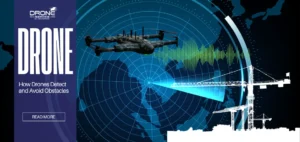
03 December 2025
How Drones Detect and Avoid Obstacles
How Drones Detect and Avoid Obstacles Drones are rapidly becoming essential tools for surveying, inspection, and delivery, thanks to major...
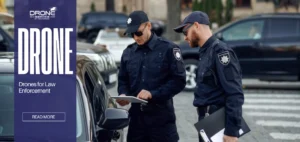
02 December 2025
Law Enforcement Drone: The complete guide
Law Enforcement Drone: The complete guide Drones are rapidly transforming modern policing. Once experimental, law enforcement drones are now standard...
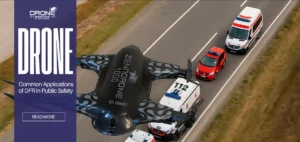
01 December 2025
Drone as First Responder (DFR) Program and Its Benefits
Drone as First Responder (DFR) Program and Its Benefits Emergency response is changing quickly as new technology reshapes how first...
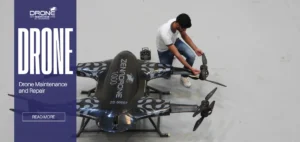
27 November 2025
The Ultimate Guide to Drone Maintenance and Repair
The Ultimate Guide to Drone Maintenance and Repair Flying a drone is exciting, but proper maintenance ensures smooth, safe, and...


















